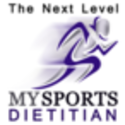-
About
- About Listly
- Community & Support
- Howto
- Chrome Extension
- Bookmarklet
- WordPress Plugin
- Listly Premium
- Privacy
- Terms
- DMCA Copyright
- © 2010-2025 Boomy Labs
Listly by My Sports Dietitian / mysportsdconnect.com
As a coach, parent or trainer, you are in a prime position to create a protective and nurturing environment for your athletes. Follow these 10 tips to keep them happy, healthy, and in the game!
Become comfortable with your own body, enjoying it for its size and figure. Do not let your own struggles become your athlete’s.
Remember, thin does not equal win. Emphasize that changing the numbers on a scale will not necessarily improve performance, but can lead to decreased athletic potential at the expense of your athlete’s health.
Focus on other areas your athlete/s can improve including the mental, emotional, and strategic elements of sport. Visit (http://www.sportspsychologycoaching.com/articles/MentalTrainingSystemChecklist.html) for a mental training checklist tool!
Applaud their efforts outside the realm of sport, and note their personal qualities.
Establish a “fat-talk free zone”, stressing that comments about weight and body size are not allowed. For more information on teasing and bullying in sport, visit (http://www.active.com/mountain-biking/articles/coach-s-guide-to-bullying-in-sports)
Body composition and weight status are extremely personal issues for many. Shedding light on a potential body size insecurity of your athlete can lead to preoccupations with weight, and potential eating disorder development.
Contact a physician or sports dietitian to lead discussions on healthy eating and its application to sport performance. Prepare them to challenge the misinformation and fad diets they are bombarded by daily: Start with this resource! (http://win.niddk.nih.gov/publications/PDFs/Myths.pdf)
Do not demonize, forbid, or label foods as “bad”. Stress all foods in moderation. What is restricted will only be desired even more so by your athlete/s. Eat along side your athlete/s at team dinners or pre-game meals to demonstrate proper fueling practices.
Following fad diets for quick fix weight loss purposes can send unrealistic and dangerous messages to your athlete/s, while also putting your health at risk. Use this tool to help identify and avoid fad diets: (http://www.eatright.org/Public/content.aspx?id=6851)
Familiarize yourself with the signs, symptoms, and risk factors of eating disorders. Reject guilt and do not look the other way if something seems off. Begin to face these conditions by visiting the websites listed below:(http://www.nationaleatingdisorders.org/)
(http://www.anad.org)
(http://www.aedweb.org)
